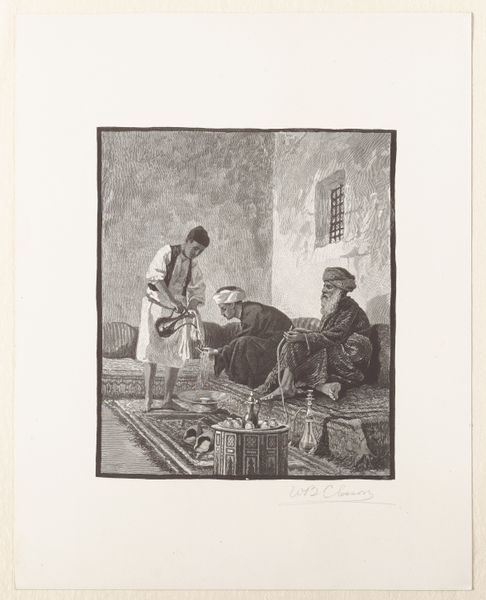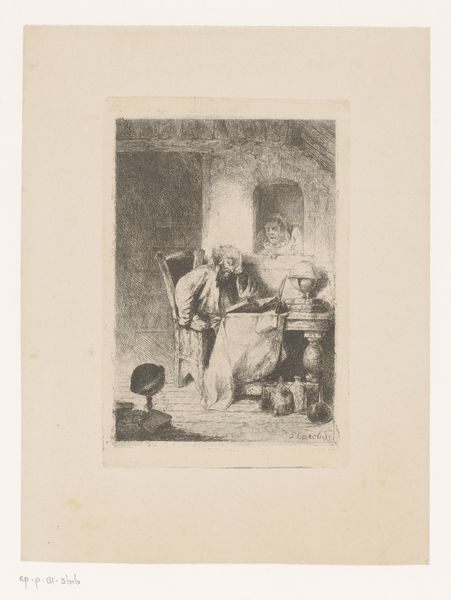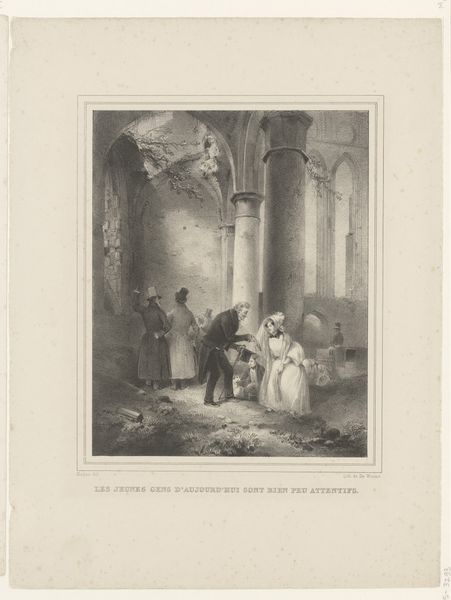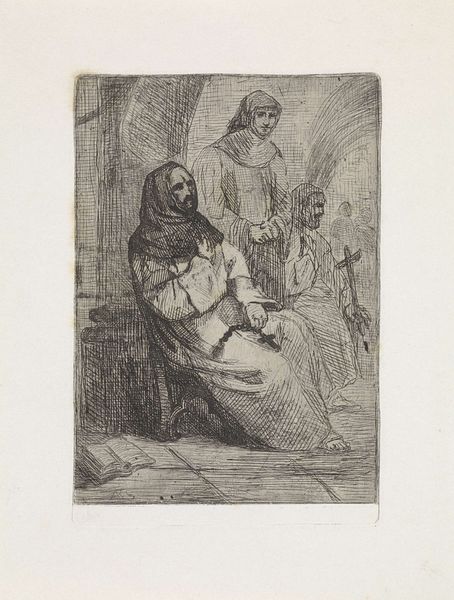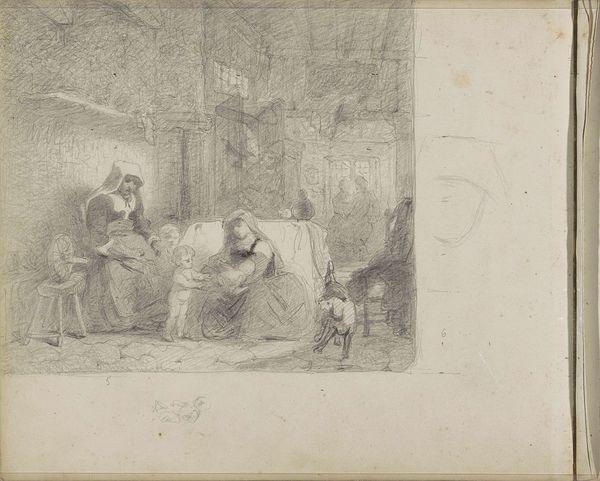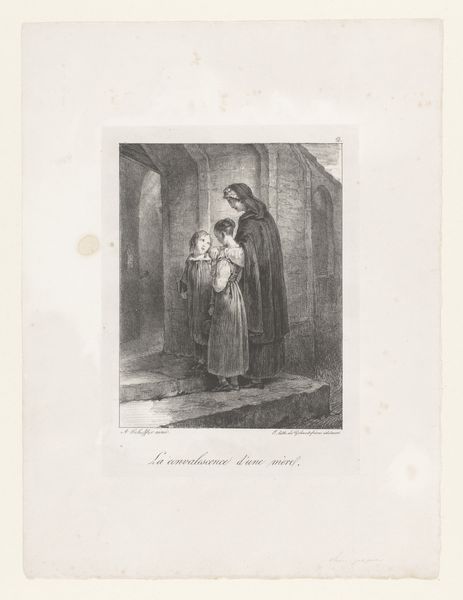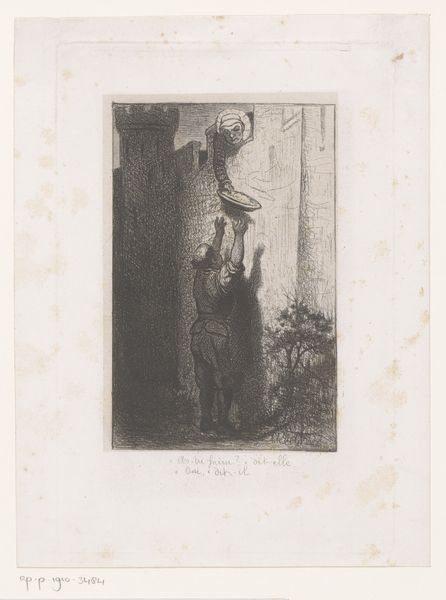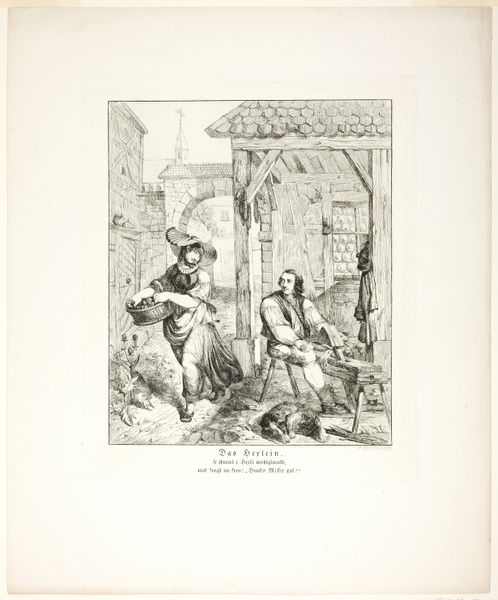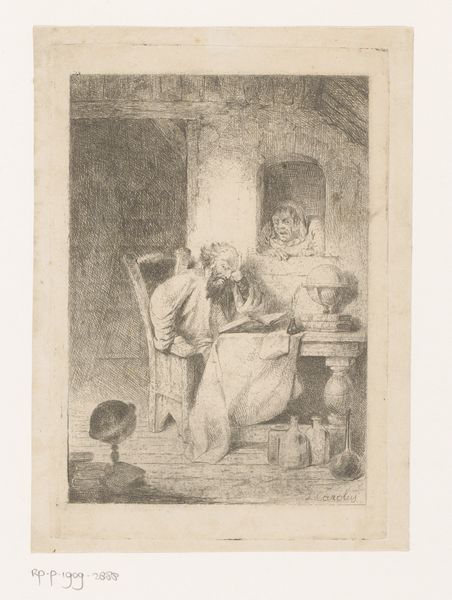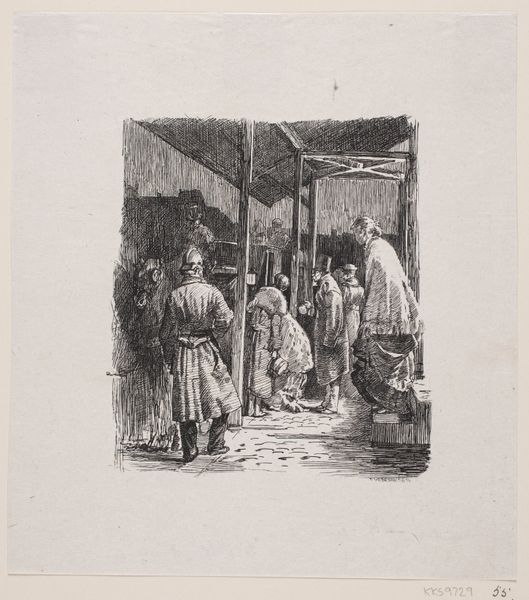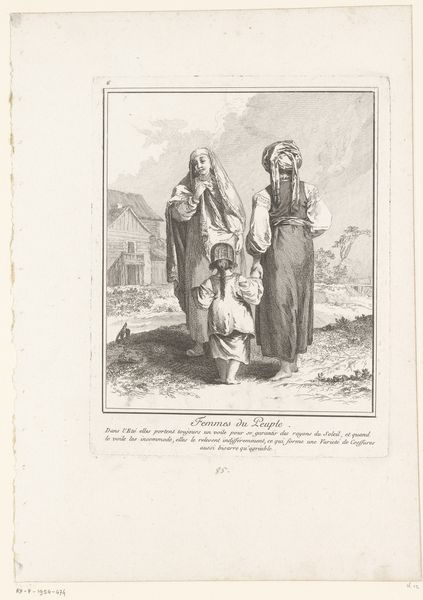
drawing, lithograph, print, paper
#
pencil drawn
#
drawing
#
street-art
#
narrative-art
#
lithograph
# print
#
figuration
#
paper
#
pencil drawing
#
romanticism
#
france
#
genre-painting
#
realism
Dimensions: 202 × 153 mm (image); 278 × 205 mm (sheet)
Copyright: Public Domain
Curator: This lithograph, "Beggars," from 1834 by Alexandre-Gabriel Decamps, is striking, isn’t it? What’s your initial impression? Editor: The texture! It feels like raw charcoal dust, smeared onto the page to depict destitution. It makes me wonder about the grit of the stones these figures are standing upon. Curator: The strategic use of chiaroscuro amplifies that effect. Decamps masterfully contrasts the deep shadows enveloping the figures with the stark highlights, guiding our gaze directly to their faces and gestures. The composition directs us towards a vanishing point with a strong emphasis on the interplay between dark and light, reflecting inner turmoil. Editor: Precisely. And you see how the composition, as much as the sharp line, guides your eye to the details – the rough clothes, the exposed feet, the literal reaching out for alms. This lithograph must have taken a huge amount of collaborative labour from artisan workshops to go into mass production. It speaks of process, where the means reflect and heighten the subject. Curator: I appreciate your reading into the work and labor inherent in printmaking at this time, but I also interpret it in a broader formalist vein. The lack of color almost transcends its documentary effect, elevating it to a study of human resilience and social critique within Romanticism. Notice the dynamism despite the limited tonal range, something realism did well at the time. Editor: True. The limited tonal range also draws attention to the cost of pigments and labour when making an artwork in color at that time in comparison to a print like this. Moreover, that level of social commentary, depicting real life circumstances, makes it something more than romantic idealism in my estimation. How many impressions were created, to then be distributed widely to different viewers, is what truly makes it innovative. Curator: Whether read through production, class, or compositional dynamism, the drawing holds powerful emotional impact, doesn’t it? Editor: Absolutely. The physical production allowed a level of artistic output to convey its message about inequity far beyond its walls.
Comments
No comments
Be the first to comment and join the conversation on the ultimate creative platform.
